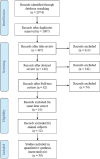Main issues in penetrating keratoplasty
- PMID: 38654981
- PMCID: PMC11034681
- DOI: 10.4103/tjo.TJO-D-24-00001
Main issues in penetrating keratoplasty
Abstract
This review explores contemporary challenges in penetrating keratoplasty (PK), focusing on technical intricacies, technological advancements, and strategies for preventing graft rejection. A systematic literature search from January 2018 to July 2023 was conducted across PubMed, Cochrane, Web of Science, Scopus, and EMBASE. The inclusion criteria comprised studies on PK and its comparison with other corneal pathologies, with emphasis on keratoconus (KC). Two independent reviewers screened studies, extracting relevant data. The review covers PK evolution, highlighting infra-red femtosecond lasers' impact on graft shapes, minimizing astigmatism, and enhancing wound healing. Graft rejection, a primary complication, is examined, detailing risk factors and preventive measures. Preoperative considerations, diagnostic techniques for rejection, and PK in KC are discussed. Postoperative care's significance, including intraocular pressure monitoring and steroid administration, is emphasized. The paper concludes with a comprehensive approach to prevent graft rejection, involving topical and systemic medications. An outlook on evolving monoclonal antibody research is presented. As the field progresses, personalized approaches and ongoing therapeutic exploration are expected to refine strategies, enhancing PK outcomes.
Keywords: Corneal surgery; graft rejection; keratoplasty; laser; penetrating; trephining.
Copyright: © 2024 Taiwan J Ophthalmol.
Conflict of interest statement
The authors declare that there are no conflicts of interests of this paper.
Figures




References
-
- Frost NA, Wu J, Lai TF, Coster DJ. A review of randomized controlled trials of penetrating keratoplasty techniques. Ophthalmology. 2006;113:942–9. - PubMed
-
- Xiao G, Tsou BC, Soiberman US, Prescott CR, Srikumaran D, Woreta FA. Keratoplasty in the United States: Trends and indications from 2015 to 2020. Cornea. 2023;42:1360–4. - PubMed
-
- Trufanov SV, Budnikova EA, Rozinova VN. Modern modifications of penetrating keratoplasty with complex operative incision. Vestn Oftalmol. 2019;135:260–6. - PubMed
-
- Adeyoju J, Konstantopoulos A, Mehta JS, Hossain P. Femtolaser-assisted keratoplasty: Surgical outcomes and benefits. J EuCornea. 2020;8:1–13.
-
- Tóth G, Szentmáry N, Langenbucher A, Akhmedova E, El-Husseiny M, Seitz B. Comparison of excimer laser versus femtosecond laser assisted trephination in penetrating keratoplasty: A retrospective study. Adv Ther. 2019;36:3471–82. - PubMed
Publication types
LinkOut - more resources
Full Text Sources
Research Materials
